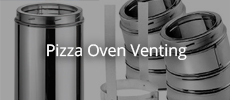Announcement
Collapse
No announcement yet.
What to do with left over heat (250°F / 120°C and less)
Collapse
X
-
This is golden, thanks!
As it happens, I have a background in a pharmaceutical laboratory and like things detailed as well
Leave a comment:
-
Sure,
Beef jerky is around 175F and will take 3-4 hrs depending on how thick and if (and how long) you've marinated the meat.
For the dried tomatoes, I would say 8-10 hrs. Our Roma tomatoes were sliced thin and the variety had very few seed and very little of the watery material around them as you normally see.
The granola is spread thin on cookie sheets and baked around 350F for 20-22 minutes, stirring half way through.
The thing we've discovered with dehydrating is you need a higher temp than any recipe will note. I've never used a dehydrator but I think they circulate air in the process. We've tried dehydrating fruit at recommended temps (~135F) and found we needed much longer to complete the process. Now we aim for 160-165. I think the difference is no circulating air. We had a friend try to dehydrate a pan of quinoa that was 3/4 - 1" thick. She normally does it in her dehydrator and it works well. It was in our oven for about 14 hrs and never dried.
Also, I've learned to not sweat the details. There's a lot of "about" and "around" in the process. I'm a pharmacist and really want to do everything precisely. I've been baking wild yeast breads since 2007 and would really go off the deep end trying to do things exactly (measuring, timing, adjusting temps, etc.) This oven has tamed that desire. I'm getting good results via experimentation. MIke ( SableSprings ) has noted in other posts that his baguettes bake in 15 minutes. I've found that my breads all bake in much less time at the same temps as my gas convection oven. Until proven otherwise, I'm attributing that to the steady temps on all three axes around the cooking space. A residential oven has cool and hot spots and has to cycle to maintain temps.
Happy experimenting.
Leave a comment:
-
Some good ideas already guys!
I’d just like a bit more guidance on what would be the best oven temperature range to successfully do the following:- Beef jerky: starting oven temp between … and …, how long should the process take approx.?
- Granola: … & ………
- Oven dried tomoatoes : around 200F for about 8 hrs
- Chicken broth: … & overnight
- Oatmeal: … & ……..
Thanks in advance!
Leave a comment:
-
I don't do this in the summer, but in the PNW winters I will often dry an oven full of wood when the oven is too cool do do anything else I need it to do. Even under cover our wood will pick up quite a bit of moisture from the air. Nothing burns like kiln dried - just make sure the oven isn't too hot our you will make charcoal!
Another trick I picked up from a friend is boiling/simmering in the oven. Often after a chicken (or two) we will throw the bones and leftovers in a pot with water and leave it in the oven overnight - makes great rich broth the we freeze and use when we need it. If it is not quite hot enough to simmer you can still cook some oatmeal overnight for breakfast.Last edited by JRPizza; 09-09-2023, 08:04 PM.
Leave a comment:
-
Kris, A quick follow up. We use sun dried tomatoes for pizza toppings, in sourdough breads, in salads, pasta and other foods. This time of year the garden is producing a lot of tomatoes. Yesterday (Mon) the oven had cooled down to around 200oF from the last firing on Thur. We put some trays of sliced Roma tomatoes in for about 8 hrs. The result was some really tasty "oven" dried tomatoes.
Leave a comment:
-
Hi Giovanni, thanks for the tips.
I'll check it out, both granola, drying fruits and beef jerky are all new for me!
Leave a comment:
-
Hello Kris, You can start with granola at the higher end of that range, transition to beef jerky and finish with dehydrating fruits. There's some overlap in the temp ranges for those foods. So, depending on the rate of temp loss of your oven, some tasty experimentation is in your future.
Leave a comment:
-
What to do with left over heat (250°F / 120°C and less)
Hi,
The title is self explanatory; what can we do with the leftover heat in the oven?
After the slow cooking/roasting it takes ages to cool down from the remaining 250°F (or 120°C) to ambient , so there must be something we can do with that, it feels like such a waste?
Thanks
Tags: None





Leave a comment: